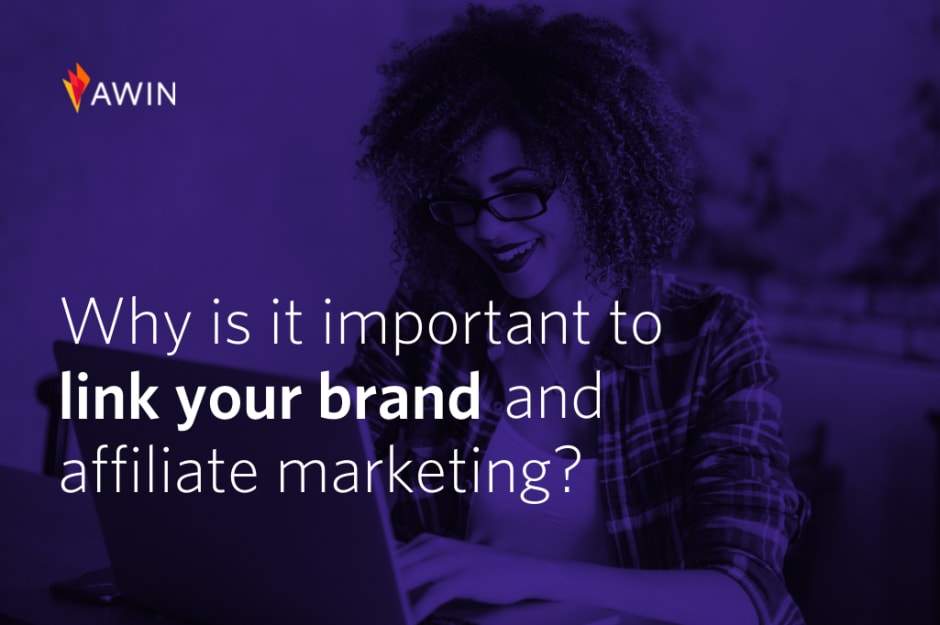5 ways to align your brand and affiliate marketing strategy
Written by Cameron Rooney on 7 minute read
No single marketing channel solely targets one part of the customer funnel. Learn how linking your brand and affiliate marketing can improve results for both.

5 ways to improve brand and affiliate marketing success
Affiliate marketing is commonly used to reach new audiences and generate ROI improvements and there is no doubt that it has huge potential to deliver success across a range of strategies including paid and social campaigns, but it will only work if it follows best practices and feels authentic for your existing audiences. Many of Awin’s successful clients have managed to connect the dots between their digital and brand teams to grow the company and achieve performance KPIs across all routes to market.
The simplest way to ensure you are making the right choice is to consider your marketing channels holistically - aligning your brand’s image goals and reputation with your affiliate marketing strategy. The following tips will help you to choose the right affiliate marketing strategies for your audience and align them with your existing brand strategies.
1. Reach out to media outlets
Large scale media outlets have always played a key role in any PR team’s day-to-day, as they ensure important press contacts are made, relationships are developed and coverage is guaranteed to maximise brand exposure.
With traditional media outlets continuing to move their content online to coincide with changing consumer habits and the rise of ad blockers minimising revenue that can be generated through display, the affiliate channel offers media publishers an effective way to monetise online content. Many of these sites now have dedicated affiliate teams to look after this ever growing revenue channel, including The Independent, Marie Claire and The Sun. Exposure varies from dedicated articles and gift guide features to newsletter inclusions. What’s critical to note here is some activity is reserved solely for the affiliate channel, meaning it cannot be booked on a PR basis. If your PR and affiliate teams are both operating to grow your business’ reach via mass media but doing it independently of each other, you could ultimately miss an opportunity for exposure because the teams are operating in their own siloes.
Additionally, as previously mentioned PR teams typically use ‘reach’ as a KPI, but partnering with media via the affiliate channel brings the added benefit of tracking metrics outside of reach that would otherwise be unavailable, such as new customers and assisted sales.
2. Sign up to niche-relevant content sites
Outside of the large scale media houses, content sites are a great way to help forward your brand marketing strategy. Similar to mass media, content partners enable more flexibility to educate consumers, whether it be via a brand showcase or a new product range. Exposure can typically include a dedicated article, newsletter inclusion or video creation (e.g. store run-through).
Some examples of content sites on Awin include Sheerluxe, Shopstyle and Lyst. Editorial publishers now make up 7% of traffic to advertisers in the UK, demonstrating the scale of these partners.
Content site customers are typically at the top of the funnel, with the publishers aiming to create interest for brands from consumers who otherwise may not have considered them.
From male advice blogs to LGBTQIA+ inclusive websites and sustainability focused blogs, there’s a specific content site that aligns and complements your target consumer. Delivering content for the niches your brand operates in ensures you are able to speak to the audience with authority and trust.
3. Find the right influencers for your campaigns
Influencers have rapidly become an intrinsic part of most companies’ brand marketing efforts. Having a roster of influencers that represent the brand - where the influencer acts as a brand ambassador - enables retailers to reach an engaged audience that trusts the influencer because of their authenticity and relatability. The Influencer Marketing Benchmark Report 2024 found that 59.4% of respondents were intending to increase influencer marketing budget in the next 12 months and nearly one quarter of respondents intended to spend more than 40% of their marketing budget on influencer campaigns.
Due to market demand, many brands have now added an Influencer Manager/Executive to their team to ensure a dedicated focus is placed on influencer marketing activity. Eleven percent of traffic to advertisers has come from influencers and bloggers in 2021 to date in the UK.
With the influencer market growing daily, expanding your brand’s presence on social media and implementing successful influencer campaigns need to be a continuous focus.
Outside of the social media platforms, Awin works with Incubeta to amplify the reach of influencer content using programmatic channels.
4. Take advantage of brand collabs and affinity partnerships
Brand collaborations have been a popular method for retailers to gain exposure to a new audience, further its message and differentiate itself from competitors. Some of the standout collaborations over the past few years include H&M and Balmain, Red Bull and GoPro, and Uber and Spotify. Several affinity partnerships have been as extensive as creating a new product line that represents both businesses.
Collaborations aren’t limited to the brand marketing team and don’t have to be as labour intensive as creating a new product range. In fact, they work very well via the affiliate channel. One recent success story is from tastecard. With the coronavirus pandemic affecting its proposition of offering discounts at restaurants, tastecard pivoted its business model from advertiser to publisher. Working with Awin to set up affinity partnerships (sometimes known as brand partnerships) via the affiliate channel with a dozen complimentary brands like BT and Lookfantastic through their new members’ platform that promoted these advertiser partners. This remarkable feat of agility protected business income and resulted in +399% revenue for tastecard. Read the full case study here.
5. Measure your success
When merging activity between departments, it can be difficult to decide on which KPIs will note success. Should reach remain the main KPI if it is a brand initiative or should performance metrics like conversion rate be used to ensure a positive ROI?
Awin’s unbiased multi-channel attribution technology SingleView empowers retailers to understand the complete path to conversion to smartly and confidently invest marketing budgets for maximum return on investment. By exploring the value of the specific touchpoints where consumers are interacting with marketing exposure and understanding how these interactions connect to broader results, digital marketers can get a much firmer grasp of what is working as well as connect the dots of their marketing efforts.
And unlike other attribution technology, SingleView requires no complicated technical integration. Sitting in Awin’s first-party tracking solution MasterTag, it easily empowers brands to assess which combinations of media formats deliver the best return on advertising spend.
Accurate, unbiased attribution is especially important when working with partners that don’t always receive the last click e.g. media publishers and influencers. Using the typical performance metric of last click, marketing activity could be deemed unsuccessful when it could have helped influence customers at the top of the funnel that ultimately converted via a different marketing channel.
The importance of aligning your brand and affiliate strategy
Affiliate marketing is continually evolving, making it important to stay ahead of the curve and anticipate how trends may shift in the coming months and years. However, effective marketing is reliant on more than jumping onto trends, it is about interpreting these approaches and implementing them in a way that considers the reputation, values and consumer expectations of your brand. Without alignment to your brand’s standards of quality, style and ethics, affiliate marketing activity will not only fail to realise its potential, but could draw a negative reaction from your existing audience.
Get support and strategy advice from Awin
It’s clear the divide between brand marketing and affiliate should no longer exist, and now more than ever it’s easy to advance wider company initiatives within your affiliate strategy.
To implement any of the recommendations discussed, or hear other ways you can grow performance metrics and brand initiatives, please get in touch.



